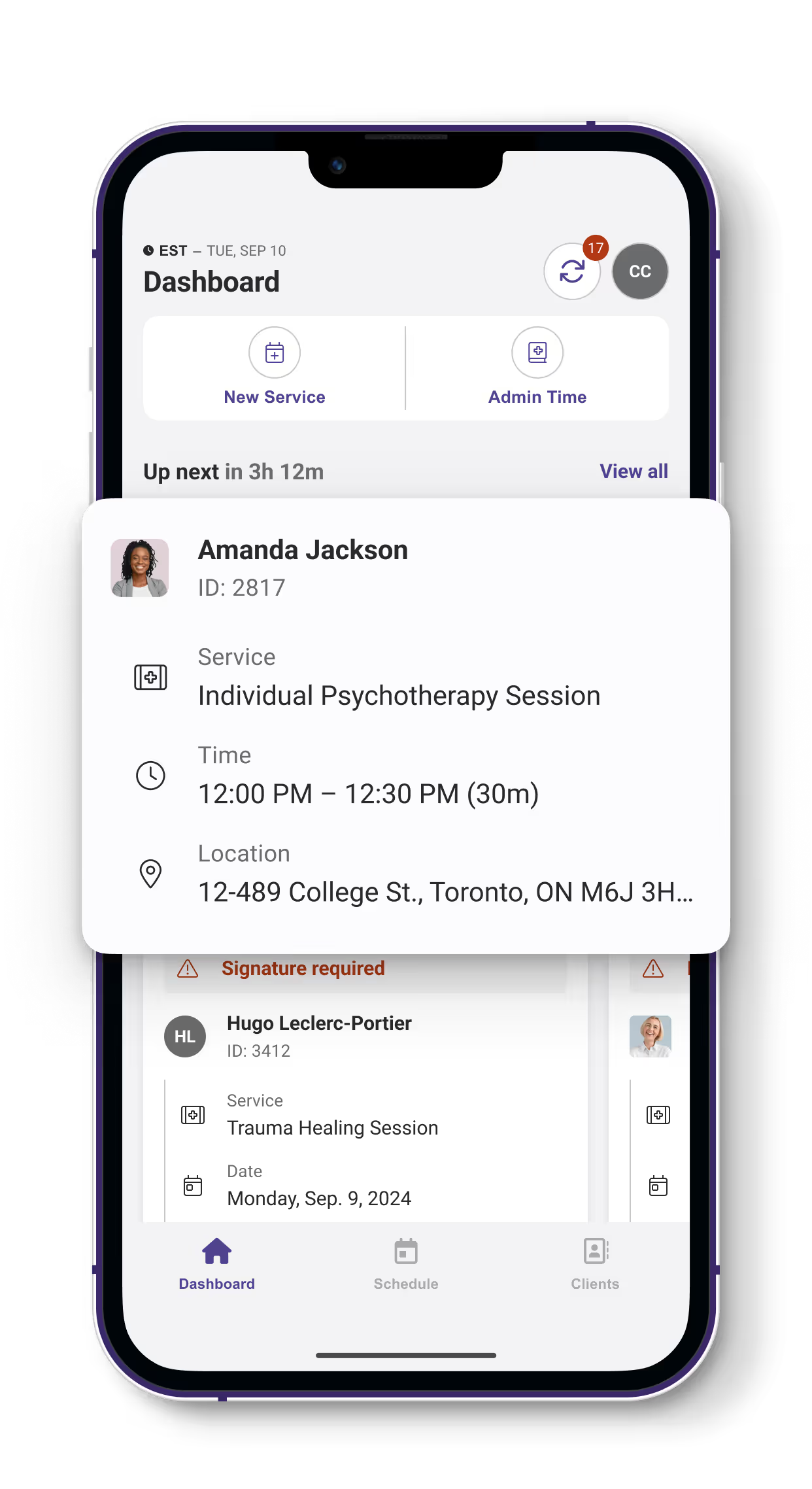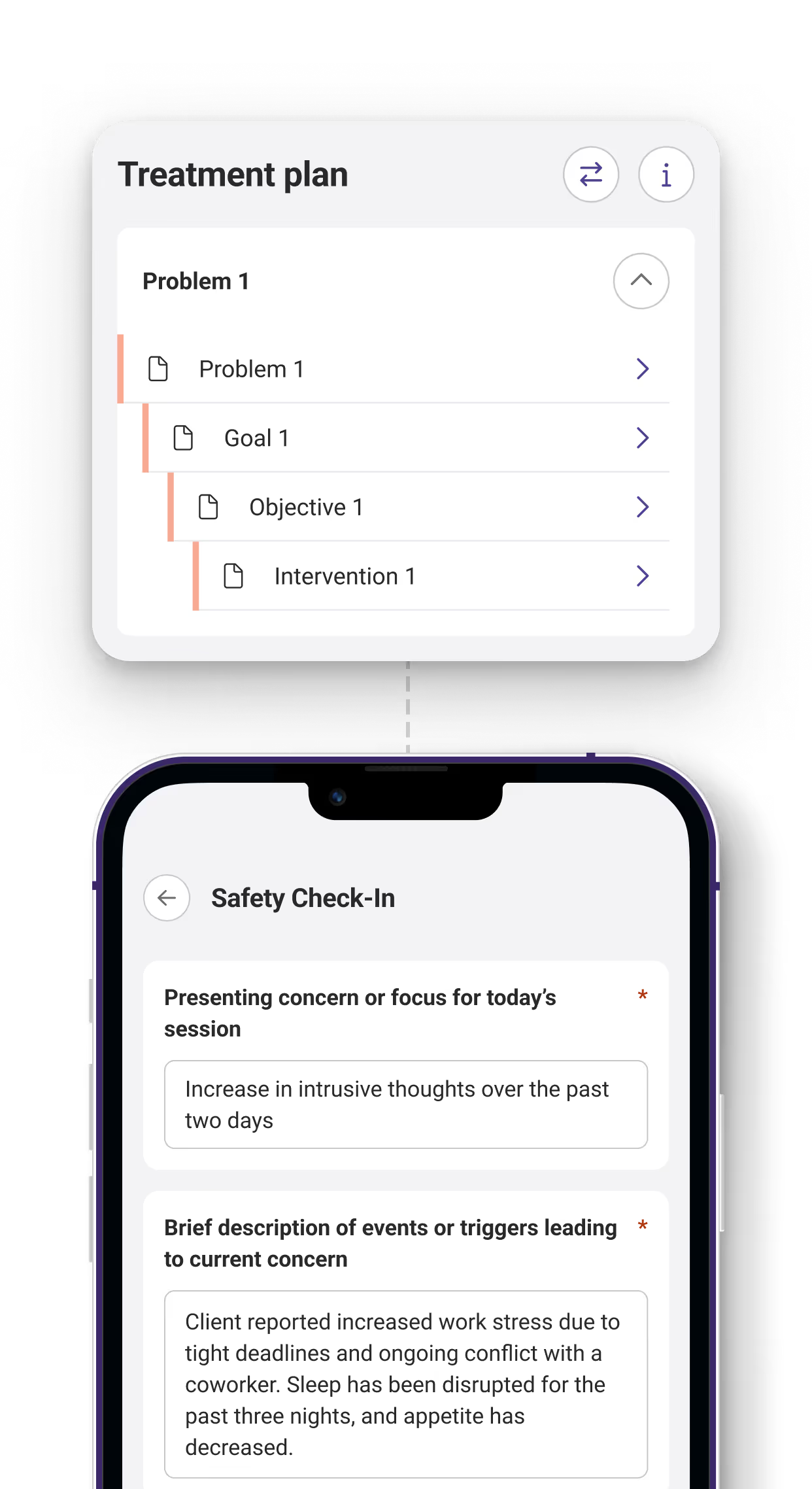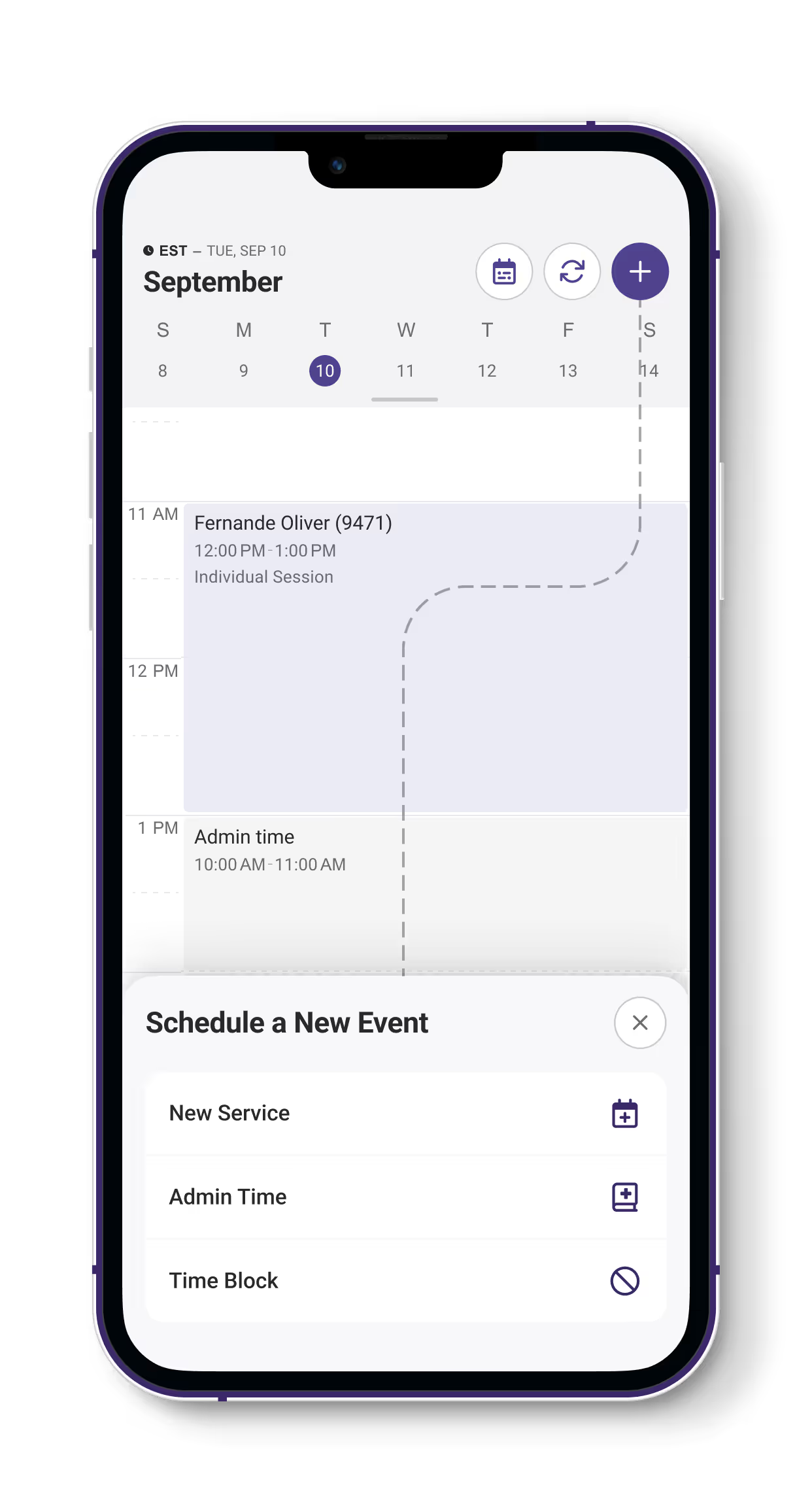Project
Credible Care EHR: Mobile app rebuild
Balancing UX innovation with legacy healthcare systems
Description
This project shows how I led the design of Credible Care’s mobile EHR app under strict time and development limits, creating a modern, intuitive experience while working within the constraints of an outdated system.
Company
Qualifacts Systems — Credible Care EHR
Industry
Behavioural Healthcare
My role
Lead Designer, collaborating with a Product Manager, Engineering Lead, and a team of Developers + QA. I conduct user research, iterate solutions, host regular design reviews, and plan for the future of the app while slowly building the design system.
Project goal
Re-design the Credible Care mobile app, unifying existing workflows and building reusable design patterns.
Status
Live – Launched in Sep 2025; Ongoing improvements.




